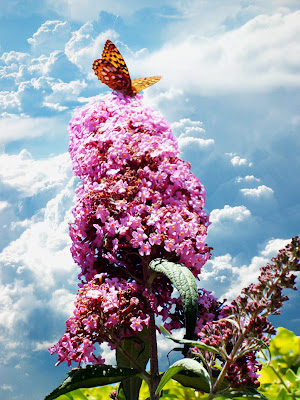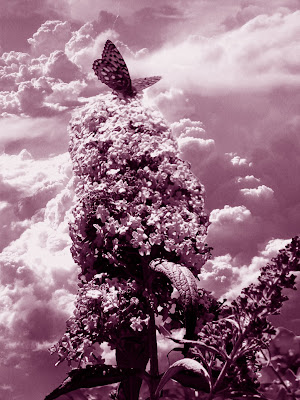
With merging layers, I cut out part of an image and place it onto another forming one image as shown in the photo on the left. Then as the next step in this project, I experimented with different adjustments in color. This is just one of many adjustment types you can do on photoshop. Today I learned about duotone, which is a binary colored image just using black and pink (or any color you choose) as shown in the picture below.
DUOTONE
In my findings of researching duotone, I was coming up empty as far as anything more than a definition. I however did finally stumble across some history on duotone prints, and where they came from. The evolved off of the Cyanotype, a print that had a blue hew and was the original term, 'blueprint'. This was a photographic printing process that used light and chemicals to produce an image of something, or a copy. Duotones also came from 'halftone' prints as well. Halftone prints take a binary color approach to images using filters.
As far as recreating this affect in PS, I found countless sites contributing to the teaching of the process. In searching, I found this great guy(http://www.revellphotography.com/blog/2009/12/give-your-black-white-images-a-different-look-with-duotones/), an awesome resource of quick clips on how to help people with photoshop. I liked his approach because it was pretty simple, and easy to follow. In creating a duotone affect, you simply have to make your photo black and white by desaturating it. After this go to the PS menu bar and select IMAGE, go to MODE, and scroll down to select GRAYSCALE. You can't select DUOTONE without the photo being grayscale. If this is a permanent alteration, select FLATTEN. Then repeat by going to MODE and then click on DUOTONE. You then have the choice to experiment with any colors to create the look you desire.
